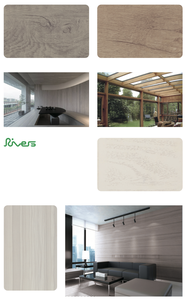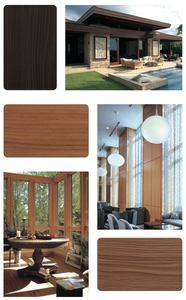
All categories
Featured selections
Trade Assurance
Buyer Central
Help Center
Get the app
Become a supplier

(8931 products available)













































Various types of shoe paint are available, catering to different needs and material requirements. Thus, selecting the appropriate type is essential for a successful application and long-lasting results.
Acrylic paint is popular for shoe painting since it can be used on many surfaces. It is water-based, which makes it simple to apply and clean up any mess that might occur while painting. Additionally, it is highly flexible and shields painted shoes from UV exposure, which can be dangerous if given enough time.
Pebeo paint is also suitable in a similar approach to acrylic paints. However, Pebeo's diverse range of paints—opaque, transparent, and iridescent—allows artists to create various unique patterns and effects. It's great for more than just shoes; so long as the paint is heat set, it can be used on some non-portable textiles at home.
Angelus paint is specifically formulated for use with leather and vinyl, making it the ideal paint for shoes of this material. Thus, Angelus paint is perfect for any projected footwear project since it is thicker than acrylic paints, resistant to cracking, and covers well.
Fabric paint is made for porous surfaces like cloth and suede. This paint aids in bonding with the shoe's material to allow paint application without inflexible or flaking results. It is also produced in multiple colors and effects to enable creativity.
Spray paint can be a good choice for basic coloring or applying a uniform, smooth coat across a shoe. Masking tape or spray shields is good for protecting parts of the shoe during the painting process. Using spray paint to add color to old shoes requires very little time and effort but will still yield great results.
Your choice of design for shoe spray paint primarily depends on the desired aesthetic and the level of detail that one wishes to achieve. There are many designs, ranging from simple one-color designs to complex artwork.
This is among the most basic designs. With solid color design, the entire shoe or just a section is uniformly painted in a single color, giving it a feel of minimalism and elegance at the same time. Regardless of whether one picks bright red, electric blue, or a soft pastel shade, a solid color design has the ability to make any outfit look more complete.
This style of shoe paint blends different color tones from one into another. It results in an ombre effect that gives the paint job a depth and dynamism unseen in solid colors. Ombre designs transition from one color to another. At the same time, gradient designs involve smoother intersections of hues, which create a more subtle and unified appearance.
Patterned designs, such as floral motifs, geometric shapes, or abstract art, are frequently painted using paint for shoes. These designs allow for original expression by incorporating different colors and patterns. Patterned designs can look complex or eye-catching, making them harder to achieve but richer in detail.
Custom designs may be an individual drawing or image, a logo, or any specific creation that the wearer feels best reflects their personality. Even though these designs require a higher level of skill to apply than the others, the result is a one-of-a-kind pair of shoes that truly stand out.
This kind of shoe paint takes its influence from urban culture, mostly characterized by vibrant colors, bold lines, and intricate lettering. Those designs sometimes come with messages or a support of a specific cause and are helpful for self-expression as well as reflection of art's journey. Street art-inspired designs can be busy and overwhelming or tightly controlled, depending on the artist's style and vision.
Shoe polish has not seen many technological advances since its inception. Some of its features have, however, been advanced and innovated to suit new trends and consumer preferences.
The newly introduced shoe paints come with water resistance properties. The majority of resistant paints use nanotechnology to produce a thin layer on the shoe that prevents water from entering while still giving a surface that allows water vapor to evaporate for breathability. As a result, wearers can now comfortably and safely use shoes in various weather conditions, especially in wet ones.
Heat-resistant shoe paints are made by incorporating thermally-stable polymers into the paint. Such paints have the potential to protect the shoes from cracking or peeling under extreme temperatures. Such paints are particularly useful for people whose jobs need them to be on their feet for long hours in hot environments, such as workers in outdoor industries or chefs.
The newer shoe paints utilize advanced polymers and cross-linking technologies, giving the paints better resistance to scratches and scuff marks. Also, these paints incorporate some flexible polymers so that the paint layer will bend and adapt to changes in the shoe's surface without cracking or wearing out. Shoes painted with scratch and scuff-resistant paints can sustain a pristine appearance even with everyday use or exposure to harsh conditions.
Many of the paints currently available on the market contain harmful chemicals, including heavy metals and VOCs. At the moment, however, there are more environmentally friendly paints available, consisting of renewable raw materials and non-toxic solvents and pigments. This change is meant to encourage sustainability among customers who care about the state of the environment while deterring the health threats linked to gas emissions.
Advanced technology and paint formulas have developed quick-drying shoe paints, thanks God. Using specific solvents and fast-evaporating carriers in these formulations reduces time to dry and allow for the application of successive coats in a much shorter time. When painted with such paints, regular wearers of shoes do not spend long waiting to wear their shoes after a paint job.
The increasing popularity of shoe paint jobs stems not only from its ability to give shoes a new lease of life but also from its multifaceted applications, which accommodate functional, aesthetic, and emotional needs.
This paints primary purpose is to give individuals the convenience of painting their shoes with any color or design they want. As a result, it allows people with old or worn shoes that they do not wish to toss out just yet to refurbish them. Custom-made designs can also make shoes after purchase more unique to satisfy individual needs. Shoe design paint can be applied to footwear to match it with an outfit or reflect one's changing style trends, saving individuals from the expense of buying several pairs.
Shoe paint is mainly employed for restoration, as it is ideal for those shoes that are still in good condition but in need of a new color. It is often used on leather and canvas shoes, which easily peel off or crack, incorporating the paint as part of the shoe's restoration. In this way, not only the appearance but also the integrity of the footwear is enhanced.
Many people who are looking for shoes that have not been mass-produced and want to express their individuality use shoe painting as a form of personal artistic expression. Different forms of artwork can be applied to the shoes, and artists may use shoe paint as a canvas through various techniques, from simple brushwork to intricate airbrushing. The customs paintings can represent the artists' inner view, cultural connotations, or other messages.
In some cases, shoe paint is used to enhance the wearers' experience of shoes designed for particular events. For example, some runners paint their shoes with images of their favorite sports team, while some hikers paint their boots in a particular way to reflect their own style. Besides the way the shoes look, some paints contain reflective or fluorescent pigments that increase visibility and the wearer's safety in low-light environments.
Furthermore, brands and organizations use shoe paint murals to advertise logos, slogans, or other brand elements. Graffiti artists employed by firms to paint footwear supply to pay artists to paint footwear to create unique, eye-grabbing ads. Such a technique provides the advantage of turning a common item into a powerful marketing tool and highlights an individual's commitment to innovative thinking regarding brand promotion.
Several aspects ensure that the chosen paint will bond to the shoe material and produce the intended appearance. To facilitate the choice of paint, here are some tips on selecting quality materials.
It's critical to choose paint that's compatible with the shoe material. Whether it's leather, canvas, or rubber, paints are especially made for certain materials so that the paint can bond well and create a long-lasting finish. Leather paints often include flexible compounds to accommodate the material's rigidity, whereas canvas shoes are best suited for acrylic paints, which easily grip the fabric surface.
Water and weather resistance allow paint to be applied to footwear used in unfavorable conditions. For such paints, water-proof and UV-resistant paints are ideal for protecting shoes from degradation by moisture and sunlight. This is especially important for outdoor or sports shoes exposed to the elements, as the paint should not only enhance the appearance but also help the wearability of the shoes last longer.
Quality shoe painting kits should feature paints that do not fade easily with exposure to light, especially in shoes that will be used outdoors frequently. Paints that contain pigments have the added advantage of preventing fading as they are often protected from UV rays. This feature is important for bright and bold designs, where fading can turn a vibrant look into a dull one in a very short time.
The choice of paint is also affected by the desired design complexity. Painters applying complex ombre effects or intricate patterns will want a paint with good workability and quick drying. Also, for detailed work, the paint has to be applied in thin coats and have a slow drying time to allow these coats to blend together well.
When selecting shoe spray paint, Safety is always a key consideration, especially for children's footwear. Paint with non-toxic, low-VOC content should be preferred to reduce health risks to both the painter and the user. Paint manufacturers that practice environmental sustainability should also be considered to protect the environment.
A1: There is a variety of paint at the market for shoes made of different materials, such as leather, canvas, or rubber. The paints are specifically formulated for certain materials; therefore, choosing the right kind of paint will ensure the paint sticks well to the surface and produces a quality and long-lasting result.
A2: If the proper paint is used for a particular shoe and the appropriate sealant is applied after painting, the paint can be expected to last. Proper shoe maintenance will also prevent the paint from wearing off due to environmental factors.
A3: Basic precautions, such as ensuring adequate ventilation, especially when using sprays or paints with strong solvents, and protecting surrounding areas with masking tape or newspapers should be taken. There is no need to worry about health effects when using paint with a low-VOC count that is eco-friendly to use.
A4:Regarding painted shoes, it's important to use paints that incorporate waterproofing technologies. Among those available are water-resistant paints, which in addition to protecting the shoe from moisture, also shield the paint from damage and thereby prolong its life.
A5: Environmental health is the primary concern with paints using renewable materials and non-toxic solvents and pigments. When you use paints with low VOC content, the emissions are also low, which affirms the practice of environmental conservation and reduces health risks.